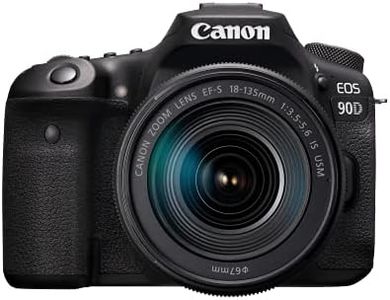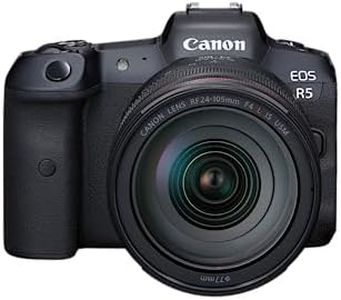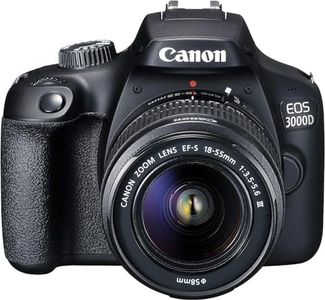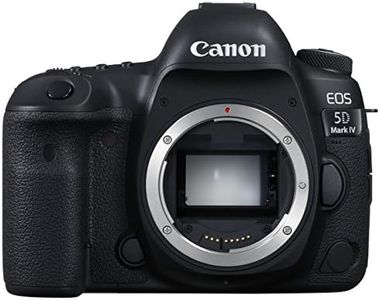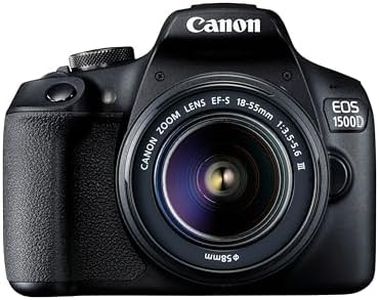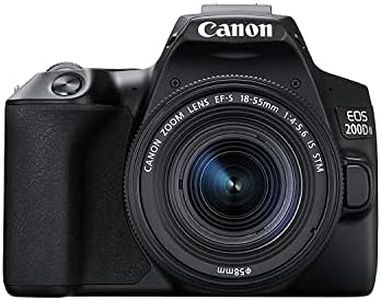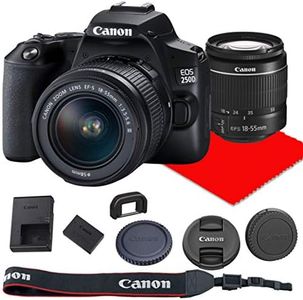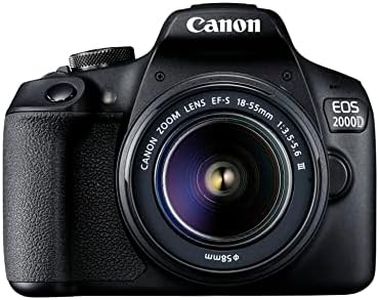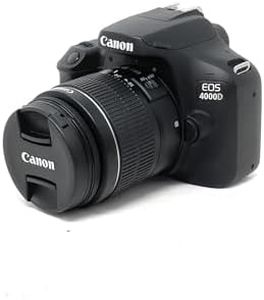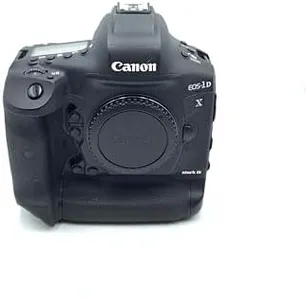We Use CookiesWe use cookies to enhance the security, performance,
functionality and for analytical and promotional activities. By continuing to browse this site you
are agreeing to our privacy policy
10 Best Canon Dslrs
From leading brands and best sellers available on the web.By clicking on a link to a third party's website, log data is shared with that third party.
Buying Guide for the Best Canon Dslrs
Choosing the right Canon DSLR can seem overwhelming, but breaking down the process into a few key factors can make things easier. Start by thinking about what you'll use your camera for—casual photos, serious hobby photography, or perhaps even professional work. Understanding your needs will guide you in selecting a camera that has the right features and performance for your style. Always consider how comfortable the camera feels to hold and operate, and make sure it supports the lenses and accessories you might want in the future.Sensor SizeThe sensor is the part of the camera that captures light and creates the image. In Canon DSLRs, the main types are full-frame sensors and APS-C sensors. Full-frame sensors are larger and generally provide better image quality, especially in low light, but cameras with these sensors tend to be larger and heavier. APS-C sensors are smaller, making these cameras more compact and often lighter. If you want better low-light performance and professional quality, full-frame is great, but for travel, everyday use, or if you're new to DSLRs, an APS-C sensor can be more practical and affordable.
MegapixelsMegapixels indicate how many millions of pixels the camera sensor uses to create an image. More megapixels can mean sharper, more detailed photos, especially if you plan to print large images or crop your photos. For most people, anything between 18 and 24 megapixels is plenty for everyday shooting, sharing online, and standard prints. Higher megapixel counts (over 24) are great for those who want to make big prints or need the extra detail for professional work, but may result in larger file sizes and aren’t always necessary for basic use.
Autofocus SystemAutofocus systems help the camera quickly and accurately focus on your subject. The number of autofocus points and their arrangement play a big role in how well the camera locks onto moving subjects and focuses in tricky situations. Entry-level models usually have fewer points, suitable for landscapes and portraits, while advanced models offer more points and better coverage, helpful for sports, wildlife, or action photography. Think about what you shoot most: fast action scenes benefit from better autofocus, while simple subjects are fine with fewer points.
Continuous Shooting SpeedThis spec tells you how many photos the camera can take per second in burst mode. It's important for capturing fast action, like sports or wildlife. Entry-level cameras might offer around 3 to 5 frames per second, which is fine for everyday and family moments. For those who want to freeze fast movement or capture decisive moments, a higher rate (up to 10 frames per second or more) is more suitable.
Viewfinder TypeCanon DSLRs use optical viewfinders, but not all are built the same. Pentamirror viewfinders are lighter and typically found in entry models, though they offer a slightly dimmer and smaller view. Pentaprism viewfinders, while heavier, are brighter and larger, making them easier to use for long shoots and critical focusing. If you shoot in dim conditions or for extended sessions, a pentaprism can be nicer, while a pentamirror works well for lighter, more casual use.
Build Quality and Weather SealingDepending on where you take photos, you may need a camera body with solid construction or weather sealing to protect against dust and moisture. Entry-level cameras are often lighter and made from more plastic, so they’re easier to carry but less rugged. Mid-range and professional bodies add tougher materials and varying degrees of weather resistance, useful if you plan to shoot outdoors in challenging conditions. Match the build to where and how you’ll be using your camera most.
Screen and ControlsScreens can be fixed, tilting, or fully articulating, with touch functionality on some models. If you shoot at awkward angles or want to take selfies or vlogs, an articulating screen is especially helpful. More advanced cameras offer extra dials and customizable buttons for quick access to key settings, which is valuable if you want to learn manual controls or make fast adjustments. Choose a layout and features that match your photography style and comfort level.
Lens CompatibilityEvery Canon DSLR has an EF or EF-S lens mount. Full-frame cameras use EF lenses, while APS-C bodies can use both EF and EF-S lenses. Check what lenses you already own or plan to buy to ensure compatibility. Also, consider whether you might want to upgrade or expand your lens collection in the future—having a wide selection of compatible lenses gives you more options as your skills and interests grow.
